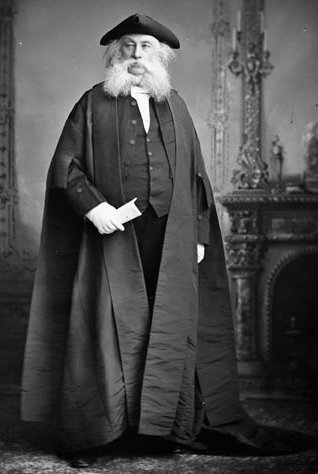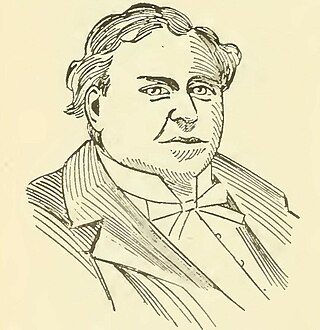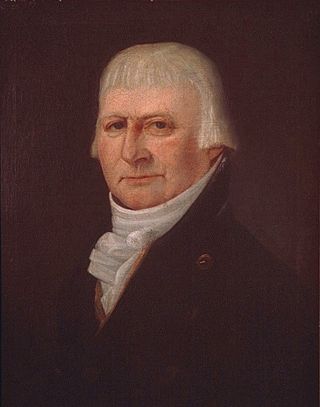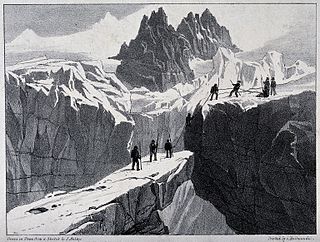
The North West Company was a fur trading business headquartered in Montreal from 1779 to 1821. It competed with increasing success against the Hudson's Bay Company in the regions that later became Western Canada and Northwestern Ontario. With great wealth at stake, tensions between the companies increased to the point where several minor armed skirmishes broke out, and the two companies were forced by the British government to merge.

Sir David Lewis Macpherson, was a Canadian businessman and political figure. He was a member of the Senate of Canada from 1867 to 1896. He was knighted for his service to the country in 1884.

James McGill was a Scottish-Canadian businessman, fur trader, land speculator, and philanthropist best known for being the founder of McGill University in Montreal. He was elected to the Legislative Assembly of Lower Canada for Montreal West and appointed to the Executive Council of Lower Canada in 1792. He was the honorary Lieutenant-Colonel of the 1st Battalion, Montreal Militia, a predecessor unit of The Canadian Grenadier Guards. He was also a prominent member of the Château Clique and one of the original founding members of the Beaver Club. His summer home stood within the Golden Square Mile.
Lt.-Colonel The Hon. Sydney Robert Bellingham was an Anglo-Irish businessman, lawyer, journalist, military and political figure in Canada East. He served as a captain with the Royal Montreal Cavalry during the Lower Canada Rebellion and represented Argenteuil in the Legislative Assembly of Quebec from 1867 to 1878. After the deaths of his three elder brothers he inherited Castle Bellingham and returned to Ireland to administer the estate

John Mure was a businessman and political figure in Lower Canada.

The Hon. Joseph Frobisher M.P., J.P., was one of Montreal's most important fur traders. He was elected to the 1st Parliament of Lower Canada and was a seigneur with estates totalling 57,000 acres. He was a founding member of the North West Company and the Beaver Club, of which he was chairman. From 1792, his country seat, Beaver Hall, became a centre of Montreal society.
Lt.-Colonel The Hon. Benjamin Joseph Frobisher, M.P., J.P. was a fur trader and political figure in Lower Canada.

Lt.-Colonel The Hon. Alexander Auldjo was a businessman and political figure in Lower Canada.

Lt.-Colonel The Hon. William McGillivray, of Chateau St. Antoine, Montreal, was a Scottish-born fur trader who succeeded his uncle Simon McTavish as the last chief partner of the North West Company until a merger between the NWC and her chief rival - the Hudson Bay Company. He was elected a member of the Legislative Assembly of Lower Canada and afterwards was appointed to the Legislative Council of Lower Canada. In 1795, he was inducted as a member into the Beaver Club. During the War of 1812 he was given the rank of lieutenant colonel in the Corps of Canadian Voyageurs as he was the highest up in the NWC's business hierarchy; the ranks of the Corps reflected one's position within the NWC as the Company had created the Corps under their own volition, and using employees as soldiers. He owned substantial estates in Scotland, Lower and Upper Canada. His home in Montreal was one of the early estates of the Golden Square Mile. McGillivray Ridge in British Columbia is named for him, as well as a handful of elementary schools in Ontario, Quebec, or British Columbia.

Edward Bowen was an Irish-born lawyer, judge and political figure in Lower Canada. He was the first Chief Justice of the Superior Court for provincial Quebec, the second Chancellor of Bishop's University, in Sherbrooke, and the first King's Counsel in Lower Canada in 1809.

Thomas Brown Anderson was a Canadian merchant, banker, and philanthropist who was director, vice-president (1847–1860) and 6th president of the Bank of Montreal (1860–1869), Member of the Special Council of Lower Canada and Vice-president of the Montreal Board of Trade (1849).
Thomas Porteous was a merchant, seigneur and politician in Lower Canada. He represented Effingham in the Legislative Assembly of Lower Canada from 1804 to 1808.

Simon McGillivray, FRS, played an intricate role in merging the family owned North West Company with the rival Hudson's Bay Company. From 1835, he co-owned the Morning Chronicle and the London Advertiser. He was Provincial Grand Master of Upper Canada (1822–1840); Fellow of the Royal Society at London; a member of the Beaver Club at Montreal and a member of the Canada Club at London.

James Bell Forsyth, was a Quebec merchant and writer. In 1831, he built the Cataraqui Estate in Sillery, on Saint-Louis Road.

Strachan Bethune, twice Bâtonnier of Montreal and the 1st Anglican Chancellor of the Diocese of Montreal.
John Forsyth was a partner in the influential commercial house of Forsyth, Richardson & Co. He was a politician, co-founder and vice-president of the Bank of Montreal, and Colonel of the Royal Montreal Cavalry. He founded the Montreal Hunt in 1826 and was a member of the Beaver Club. He is the ancestor of the Forsyth-Grants of Ecclesgreig Castle.

The Beaver Club was a gentleman's dining club founded in 1785 by the predominantly English-speaking men who had gained control of the fur trade of Montreal. According to the club's rules, the object of their meeting was "to bring together, at stated periods during the winter season, a set of men highly respectable in society, who had passed their best days in a savage country and had encountered the difficulties and dangers incident to a pursuit of the fur trade of Canada". Only fragmentary records remain of their meetings, but from these it is clear that the Beaver Club was "an animated expression of the esprit de corps of the North West Company". The men of the Beaver Club were the predecessors of Montreal's Square Milers.

John Richardson Auldjo, FRS, FRGS, was a Canadian-British traveller, geologist, writer and artist. He was British Consul at Geneva. He was a close friend of Edward Bulwer-Lytton and a member of Sir William Gell's inner circle at Naples.

John MacDonald of Garth was a colourful character involved in the Canadian fur trade. He was an enthusiastic duellist and a shrewd businessman who became a partner in the North West Company and a member of the Beaver Club at Montreal, Lower Canada. In an account of his exploits, he was described as having "indomitable courage... brave, reckless and domineering, with a decided tendency to seek redress with his own hands," characteristics that made him well-suited to his profession. Built in 1816, his home, Inverarden House, near Cornwall, Upper Canada, was later designated a National Historic Site of Canada. According to the 1997 book Lords of the North, by James McDonell and Robert Campbell, the Hotel Macdonald in Edmonton, Alberta was named for him.

Lt.-Colonel The Hon. Roderick Mackenzie of Terrebonne was a Canadian fur trader, landowner and politician. He was a partner in the North West Company and a member of the Beaver Club at Montreal. He was a lifelong friend and the private confidant of his first cousin, Sir Alexander Mackenzie. He was an intellectual who established a library at Fort Chipewyan and both wrote and published works on the fur trade. In 1801 he made his home at Terrebonne, Quebec, purchasing the Seigneury in 1814, although he was forced by a court action to relinquish his title to the property in 1824. He continued to live there until his death. He held many public appointments, most notably as a member of the Legislative Council of Lower Canada.


















